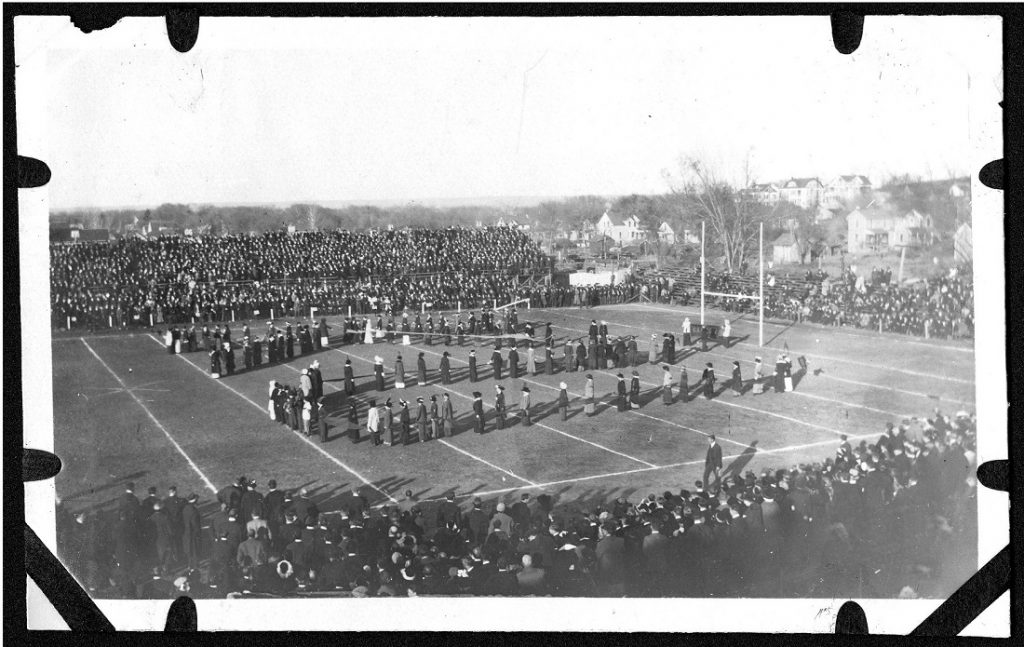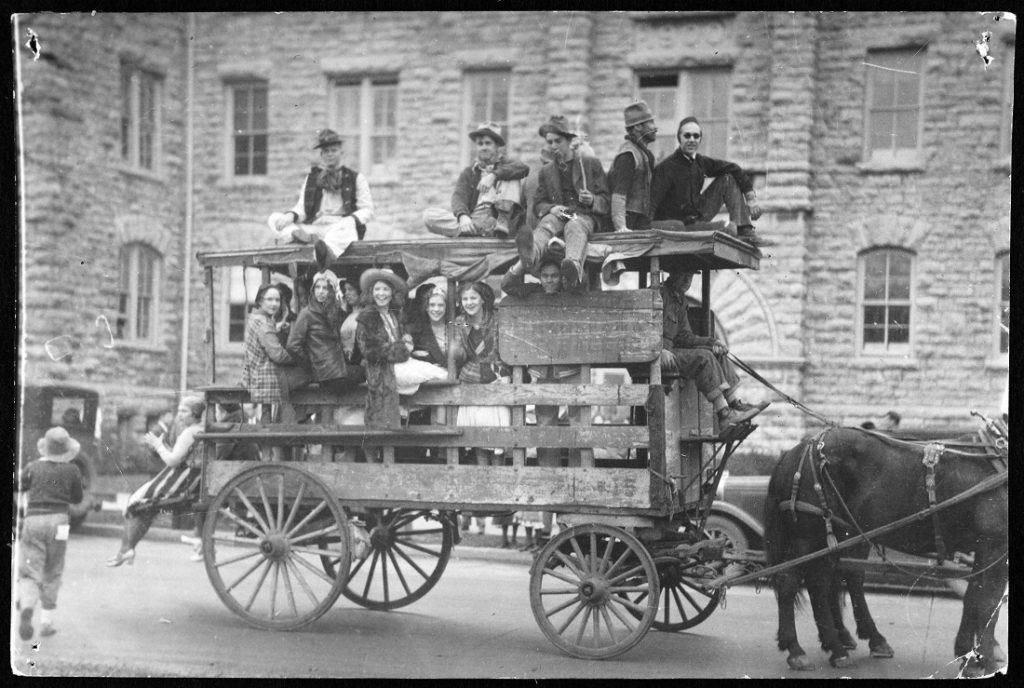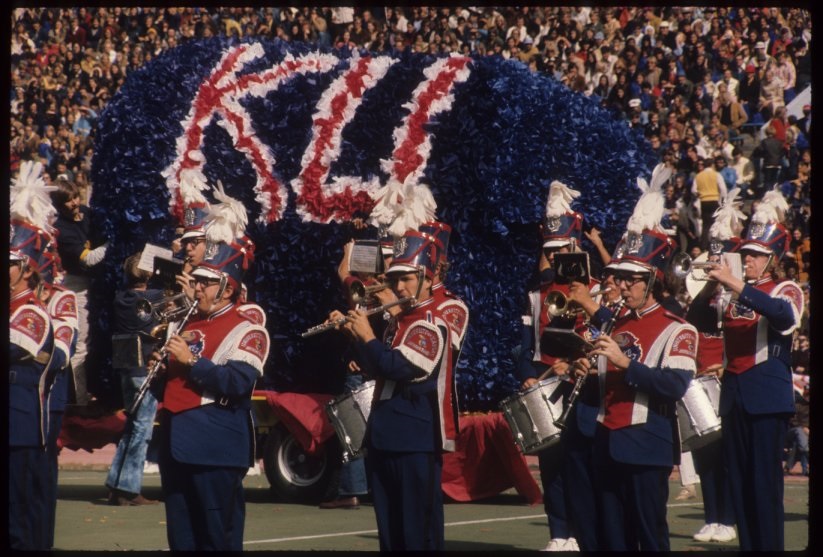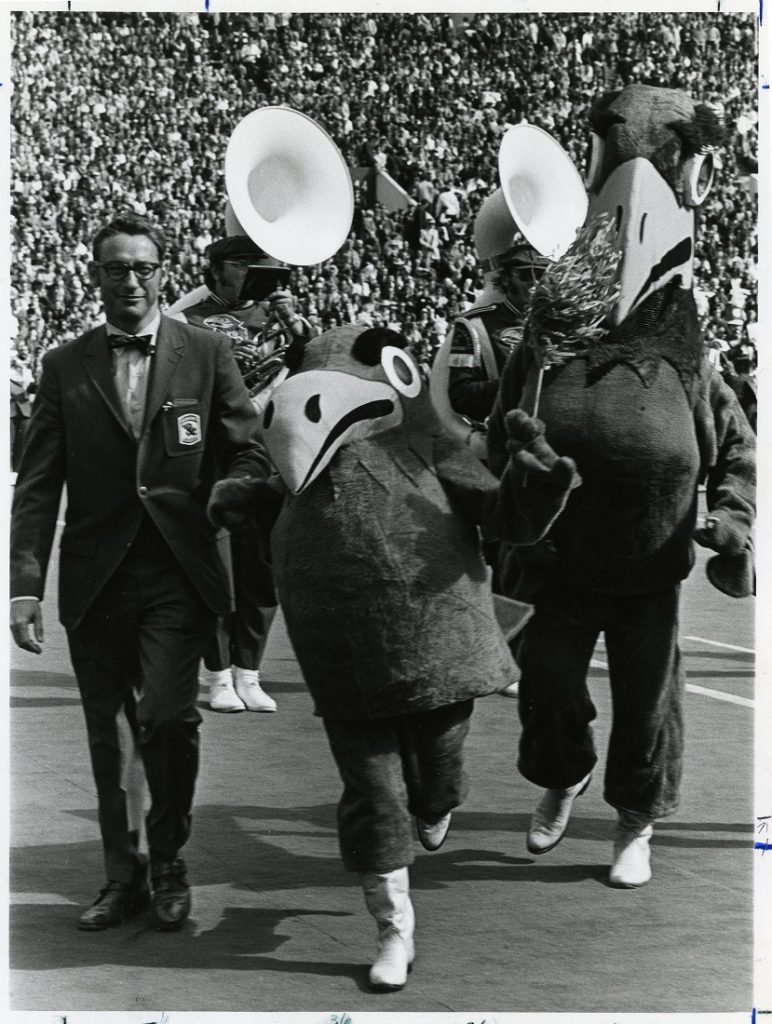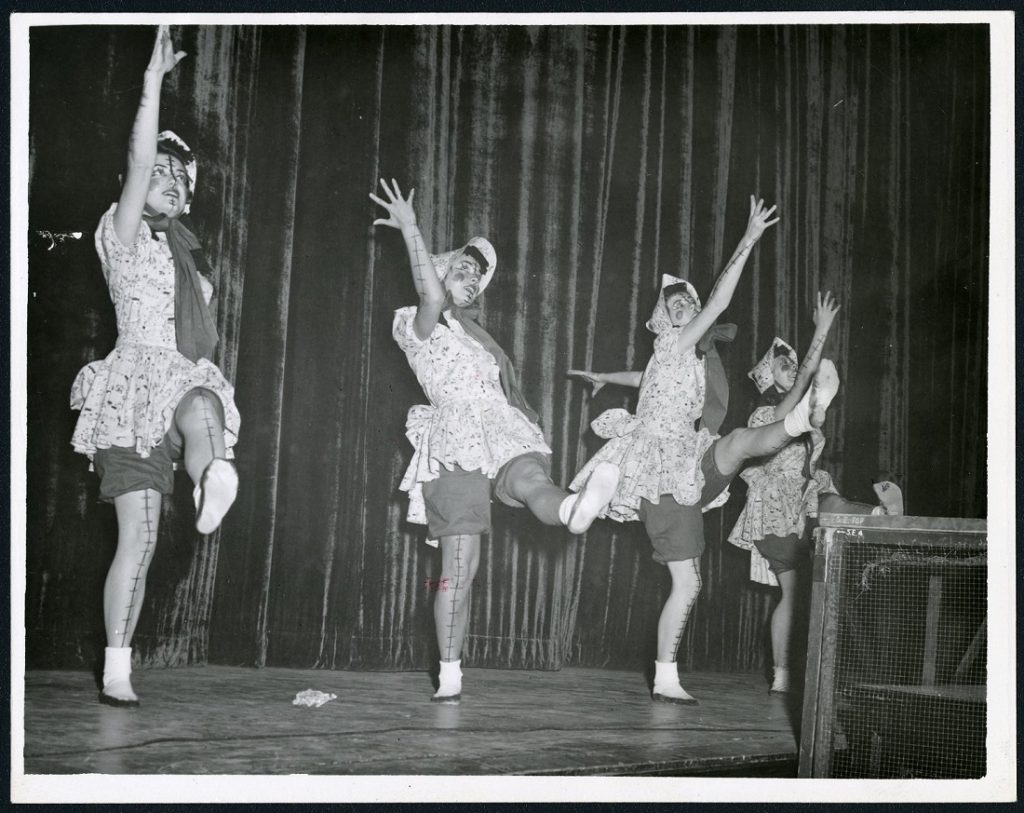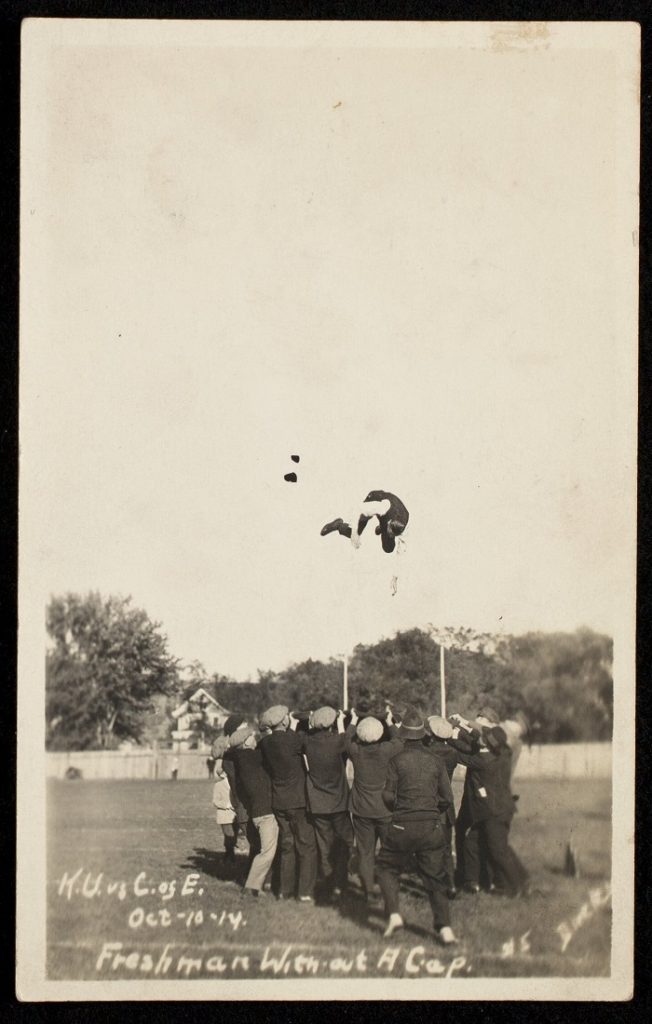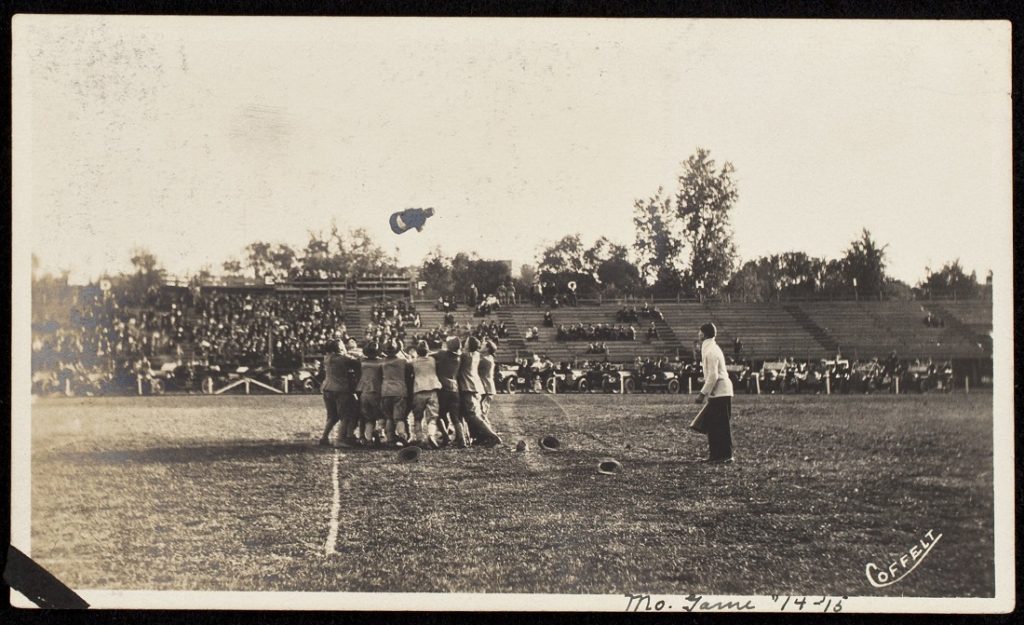Throwback Thursday: Nightshirt Parade Edition
August 29th, 2019Each week we’ll be posting a photograph from University Archives that shows a scene from KU’s past. We’ve also scanned more than 34,800 images from KU’s University Archives and made them available online; be sure to check them out!
We’re looking forward to the first home game of the KU football season on Saturday. During the first half of the twentieth century, that event would have been celebrated with a Nightshirt Parade tomorrow night.
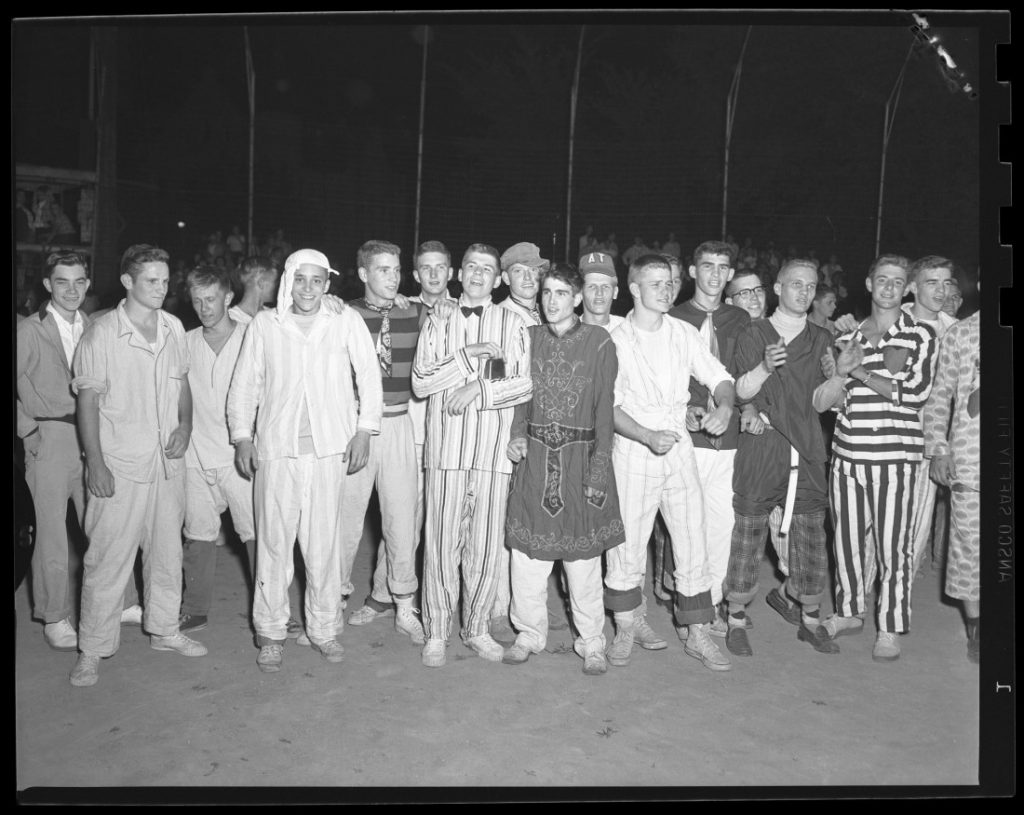
The article “Nighty Night for the Nightshirt Parades” on the KU history website describes the event.
Nightshirt Parades became a venerable KU tradition. Typically, on the night before the first home game of the season, hundreds of students wearing nightshirts (usually over top of their clothing) would make their way north through campus to Sixth Street, then march east along Sixth until they reached Massachusetts Street. At this point, students would form “into one continuous serpentine line,” which amounted to a fair approximation of a conga line. Single file and holding the person in front of them, the students would weave their way down Massachusetts until they reached South Park where a bonfire would be held in anticipation of the next day’s game. At other times, the route was essentially reversed, with the procession beginning in the park and winding its way onto campus…
The onset of World War II marked the beginning of the end for the traditional Nightshirt Parade. Student enrollments dropped, and the annual procession filled in the depleted ranks by including coeds for the first time. When enrollments revived in the post-war years, the student body contained many veterans attending on the GI Bill. Serious, older, and less impressionable, these students were ill inclined to participate in or otherwise put up with anything they considered collegiate foolishness. They brought an end to the freshman cap tradition at KU, and saw little reason to don pajamas for a public event. Nonetheless, a version of the Nightshirt Parade continued well into the 1950s. However, the event had lost much of its original spontaneity and student enthusiasm for it dwindled.
The last Nightshirt Parade took place in 1957, replaced the following year with a “Traditions Rally.”
Caitlin Donnelly
Head of Public Services

